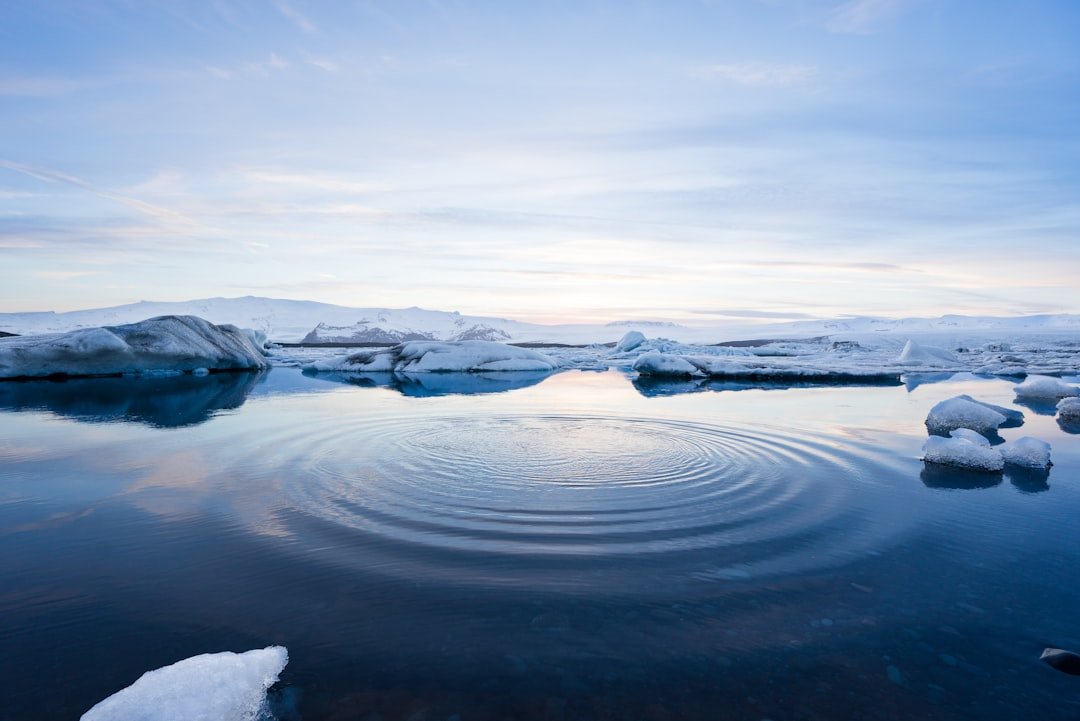Understanding Climate Refugees: Who Are They and Why Are They Running? Climate refugees are people or groups who have been compelled to flee their homes because of abrupt or gradual changes in their surroundings that jeopardize their safety and means of subsistence. Climate change, which shows up as extreme weather, droughts, desertification, and rising sea levels, is the main cause of these changes. Since environmental factors are currently not recognized by international law as legitimate grounds for asylum, climate refugees are frequently left in a legal limbo, unlike traditional refugees who flee persecution or conflict. This lack of acknowledgment makes their situation more difficult and calls into question their rights and safeguards.
Key Takeaways
- Climate refugees are people who are forced to leave their homes due to environmental disasters and the impacts of climate change.
- Environmental disasters such as hurricanes, droughts, and rising sea levels are causing displacement and forcing people to flee their homes.
- Climate refugees face legal, social, and economic obstacles as they navigate the challenges of finding new homes and livelihoods.
- International organizations play a crucial role in addressing the needs of climate refugees and providing support and assistance.
- Climate justice and human rights demand that we support climate refugees and find ethical and moral solutions to their displacement.
There are several factors contributing to the displacement of climate refugees. Natural catastrophes frequently leave entire communities vulnerable, destroying infrastructure and homes. As an illustration, coastal areas are more susceptible to hurricanes & flooding, whereas arid regions experience protracted droughts that make farming unsustainable.
In an effort to find safer and more stable living conditions, people are forced to leave their homes as these environmental conditions worsen. The fact that many of these people are from underserved communities that lack the means to recover from disasters or adjust to changing climates only serves to highlight how urgent their situation is. The Effects of Climate Change on Displacement: How Natural Disasters Are Driving People to Evacuate Their Homes The effects of climate change on human displacement are extensive and significant.
Climate change has increased the frequency & severity of natural disasters like hurricanes, floods, & wildfires. Along with destroying tangible structures, these occurrences also upend social networks and economic systems.
Following such traumatic events, communities frequently struggle to recover while dealing with the psychological effects.
| Country | Number of Climate Refugees | Year |
|---|---|---|
| Bangladesh | 1,000,000 | 2020 |
| Philippines | 600,000 | 2019 |
| India | 500,000 | 2018 |
| Indonesia | 400,000 | 2017 |
Also, persistent food and water insecurity may result from the gradual impacts of climate change, such as increasing temperatures and altered precipitation patterns. These changes have the potential to be disastrous in areas where agriculture is the main driver of the economy. Growing crops and raising livestock may become more and more difficult for farmers, which could cause economic decline and force families to relocate in quest of better opportunities.
Since it weakens communities over time and produces a vicious cycle of vulnerability that is difficult to break, this gradual displacement can be just as destructive as unexpected disasters. The Difficulties of Climate Refugees: Handling Legal, Social, & Economic Barriers Climate refugees encounter numerous difficulties that exacerbate their already vulnerable circumstances. The absence of legal recognition is one of the biggest challenges. Due to their lack of official refugee status under international law, people who have been displaced by climate change frequently lack access to basic rights and protections. Their ability to apply for asylum or obtain humanitarian aid may be hampered by this legal ambiguity, making them more susceptible to discrimination & exploitation in their new countries. Climate refugees frequently face social obstacles that worsen their situation in addition to legal ones.
An influx of newcomers may cause tensions and conflicts in host communities due to their lack of hospitality or infrastructure, which could affect public services, employment opportunities, and housing. Also, because they are migrants, climate refugees might experience discrimination or stigma, which can make it difficult for them to integrate into new communities. Due to linguistic obstacles or a lack of appreciation for their abilities and credentials, they might find it difficult to obtain steady work. Climate refugees must negotiate a complicated web of obstacles in their pursuit of safety and stability due to the confluence of legal, social, and economic issues. International organizations are essential in meeting the needs of climate refugees because they offer humanitarian aid and push for legislative changes that take into account their particular situation.
Organizations like the International Organization for Migration (IOM) & the United Nations High Commissioner for Refugees (UNHCR) have started to include climate-related displacement in their frameworks.
These groups also offer displaced populations vital services like emergency relief, housing, and medical attention. They frequently work with NGOs and local governments to carry out initiatives that aid in both short-term requirements and long-term rehabilitation. For example, they could help children who have been displaced from their homes get an education or offer vocational training to adults looking for work in new settings.
International organizations are essential in aiding climate refugees in rebuilding their lives by attending to their immediate as well as long-term needs. Supporting Climate Refugees Is Ethical and Morally Necessary The problem of climate refugees brings up significant issues regarding human rights & climate justice. The moral need to assist climate refugees is evident as the effects of climate change disproportionately impact vulnerable groups, who frequently have made the least contribution to the issue. Richer countries, according to many, have a moral obligation to help those who are suffering as a result of environmental damage made worse by resource exploitation and industrialization.
Human rights frameworks also emphasize how urgent it is to take action for climate refugees. The right to food, shelter, health care, and life are all at risk due to displacement brought on by climate change. Proponents contend that governments need to take proactive steps to safeguard those impacted by environmental disasters and acknowledge these rights in their policies. This entails not only offering aid right away but also tackling the underlying causes of climate change by implementing sustainable practices and laws that put justice and equity first. Finding Resettlement and Adaptation Solutions for Climate Refugees Resettlement and adaptation strategies are both necessary to find sustainable solutions for climate refugees. Programs for resettlement are designed to give displaced people safe housing and access to necessary services in new areas.
Governments, non-governmental organizations, & local communities must carefully plan and work together during this process to make sure that newcomers are successfully integrated without putting a burden on already-existing resources. Adaptation tactics are just as crucial for meeting the needs of refugees from climate change. Enhancing resilience in both host communities and displaced populations is the main goal of these tactics. For instance, spending money on infrastructure upgrades can improve living conditions for displaced people while reducing the effects of future disasters. Also, encouraging community participation in adaptation initiatives can enable locals and visitors to collaborate toward shared objectives, which will ultimately result in more cohesive societies.
Future Climate Refugee Prevention The prevention of future climate refugees necessitates a two-pronged strategy that prioritizes both adaptation & mitigation measures. The goal of mitigation is to slow down the rate of climate change by lowering greenhouse gas emissions. Making the switch to renewable energy, increasing energy efficiency, and encouraging sustainable land use practices can all help achieve this. Societies can contribute to the prevention of environmental degradation that results in displacement by tackling the underlying causes of climate change. Strategies for adaptation are just as important in preparing communities for the already inevitable effects of climate change. This entails making investments in robust infrastructure, creating natural disaster early warning systems, and putting in place sustainable farming methods that are resistant to shifting weather patterns.
By providing communities with the necessary adaptation resources, societies can lessen their susceptibility to future environmental displacement. Increasing Knowledge and Acting: How Individuals Can Assist Climate Refugees Increasing knowledge of the predicament of climate refugees is crucial for developing empathy and inspiring local and international action. People can contribute significantly to this endeavor by learning about the problems associated with climate displacement and informing others about it. The stories of people impacted by environmental disasters and voices calling for climate justice can be effectively amplified through social media platforms.
People can also take action by lending support to groups that assist climate refugees directly or by pushing for legislative changes that uphold their rights. This could entail contributing resources or time, as well as taking part in campaigns that increase public awareness of climate justice issues. Also, people can support larger initiatives to mitigate climate change by making considerate decisions in their daily lives, such as lowering carbon footprints or patronizing sustainable companies.
In summary, resolving the issues that climate refugees face calls for a multipronged strategy that includes proactive steps to combat climate change, community involvement, humanitarian aid, & legal recognition. People may help create a more equitable society where everyone’s needs and rights, regardless of their circumstances, are acknowledged and respected by being aware of the nuances of this problem and acting on it on many levels.
Climate Refugees are a growing concern as the effects of global warming continue to displace communities around the world. In a related article on reducing greenhouse gas emissions, it discusses the urgent need for countries to come together and take action to combat climate change. By implementing sustainable practices and reducing our carbon footprint, we can help prevent further displacement of vulnerable populations. To learn more about reducing greenhouse gas emissions, visit this article.



